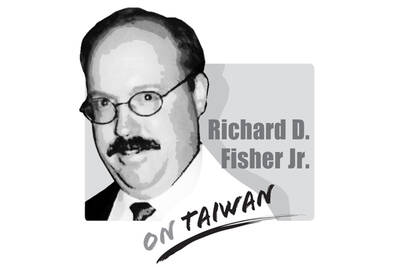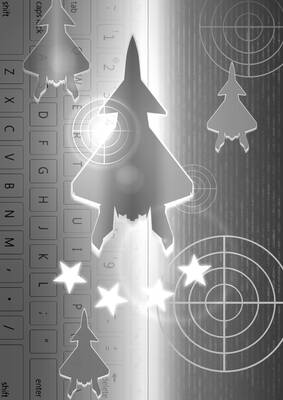Chinese overcapacity is raising concerns worldwide. It is easy to see why: China accounts for nearly one-third of the world’s manufacturing value-added and one-fifth of global manufacturing exports. However, there is good reason to believe that the decline of China’s manufacturing sector is imminent.
To understand what is happening now in China, it is worth recalling Japan’s recent history. After World War II, Japan’s manufacturing sector grew rapidly, thanks largely to access to the massive US market, but the 1985 Plaza Accord (which boosted the yen’s value and weakened Japanese exports), together with an aging population and a shrinking labor force, reversed this trend.
From 1985 to 2022, the share of Japanese goods in US imports dropped from 22 percent to 5 percent, and Japan’s share of global manufacturing exports declined from 16 percent to 4 percent.
Moreover, Japan’s share of global manufacturing value-added fell sharply, from 22 percent in 1992 to 5 percent in 2022. The number of Japanese companies on the Fortune Global 500 list dropped from 149 in 1995 to just 40 today.
China has followed a similar upward trajectory in recent decades, but China’s manufacturing rise was even more dependent on the US market. Japan’s imports from the US equaled 51 percent of its exports to the US from 1978 to 1984, compared with a 23 percent share for China from 2001 to 2018.
Chinese family planning policies are largely to blame for this imbalance. Typically, household disposable income would account for 60 to 70 percent of a country’s GDP, in order to sustain household consumption of around 60 percent of GDP. However, in China the one-child policy — which was in place from 1980 until 2015 — limited household earnings, encouraged high savings and constrained domestic demand.
As a result, Chinese household disposable income dropped from 62 percent of GDP in 1983 to 44 percent of GDP today, with household consumption falling from 53 percent of GDP to 37 percent of GDP. In Japan, by contrast, household consumption equals 56 percent of GDP.
Look at it this way: If wages would normally amount to US$60 to US$70, Chinese workers receive only US$44 and have just US$37 of spending power, whereas Japanese workers have US$56 of spending power.
However, China’s government has plenty of financial resources, which it uses to support industrial subsidies and investment in manufacturing. Moreover, because China’s manufacturing sector offers high returns, international investors are willing to channel capital toward it. Add to that a surplus of about 100 million workers, and excess capacity is difficult to avoid.
Given insufficient demand at home, China’s only option for reducing its excess capacity and creating enough jobs for its population is to maintain a large current-account surplus. That is where the US comes in: The share of Chinese goods in US imports rose from 1 percent in 1985 to 22 percent in 2017. From 2001 to 2018, the US accounted for three-quarters of China’s trade surplus.
China’s giant surplus is the mirror image of the US’ deficit, and while the rise of Chinese manufacturing is hardly the only reason for the decline of US manufacturing, it is a big one. The US’ share of world manufacturing exports remained stable, at 13 percent, between 1971 and 2000, but fell sharply after China joined the WTO in 2001, and stood at just 6 percent in 2022. The US’ share of manufacturing value-added likewise plummeted, from 25 percent in 2000 to 16 percent in 2021.
As these trends devastated the US’ Rust Belt, which stretches from Wisconsin to eastern Pennsylvania, popular frustration with globalization, and with the “political elites” who had encouraged it, grew steadily. In 2016, former US president Donald Trump rode their frustration into the White House, vowing to revive US manufacturing and force China to change its trading practices. Trump hopes to do the same this November.
In this sense, China’s one-child policy indirectly but profoundly reshaped the US political landscape. Now US politics are reshaping China’s economy. The US backlash against China, which began with Trump’s tariffs in 2018 and has intensified under US President Joe Biden, has caused the share of Chinese goods in US imports to drop to just 12.7 percent in the first half of this year.
Beyond losing the US market, China is losing some of its own manufacturing companies, which are shifting part of their production to countries such as Vietnam and Mexico to avoid US tariffs. This partial transfer augurs a wider withdrawal, much like that faced by Japan’s manufacturing sector as it fell into decline.
China is looking increasingly like Japan for two other reasons. First, its workforce is rapidly shrinking and aging. According to the government, annual births have plummeted from 23.4 million, on average, in 1962-1990 to just 9 million last year, and even that figure is probably grossly exaggerated. Within a few years, China will probably record just 6 million births per year.
Meanwhile, the median age of migrant workers, who make up 80 percent of China’s manufacturing workforce, has risen from 34 in 2008 to 43 last year, with the share of people older than 50 rising from 11 percent to 31 percent. Some manufacturing plants are already closing for lack of workers.
Second, China’s services sector is set to squeeze manufacturing. As China’s government seeks to increase the GDP share of household disposable income, Chinese demand for US goods would rise, and some manufacturing workers would shift to services, which is also where China’s rapidly growing pool of college graduates would find employment.
The decline of manufacturing might not happen as fast as it did in Japan, because China has a larger domestic market and a more complete industrial ecosystem, and because it is investing heavily in artificial intelligence and robotics, which could deliver productivity gains. However, decline is inevitable and irreversible. Unfortunately for the US, this would not necessarily bring about a revival of domestic manufacturing.
Yi Fuxian (易富賢), a senior scientist at the University of Wisconsin-Madison, spearheaded the movement against China’s one-child policy and is the author of Big Country With an Empty Nest, which went from being banned in China to ranking first in China Publishing Today’s 100 Best Books of 2013 in China.
Copyright: Project Syndicate

As the Chinese Communist Party (CCP) and its People’s Liberation Army (PLA) reach the point of confidence that they can start and win a war to destroy the democratic culture on Taiwan, any future decision to do so may likely be directly affected by the CCP’s ability to promote wars on the Korean Peninsula, in Europe, or, as most recently, on the Indian subcontinent. It stands to reason that the Trump Administration’s success early on May 10 to convince India and Pakistan to deescalate their four-day conventional military conflict, assessed to be close to a nuclear weapons exchange, also served to
China on May 23, 1951, imposed the so-called “17-Point Agreement” to formally annex Tibet. In March, China in its 18th White Paper misleadingly said it laid “firm foundations for the region’s human rights cause.” The agreement is invalid in international law, because it was signed under threat. Ngapo Ngawang Jigme, head of the Tibetan delegation sent to China for peace negotiations, was not authorized to sign the agreement on behalf of the Tibetan government and the delegation was made to sign it under duress. After seven decades, Tibet remains intact and there is global outpouring of sympathy for Tibetans. This realization
After India’s punitive precision strikes targeting what New Delhi called nine terrorist sites inside Pakistan, reactions poured in from governments around the world. The Ministry of Foreign Affairs (MOFA) issued a statement on May 10, opposing terrorism and expressing concern about the growing tensions between India and Pakistan. The statement noticeably expressed support for the Indian government’s right to maintain its national security and act against terrorists. The ministry said that it “works closely with democratic partners worldwide in staunch opposition to international terrorism” and expressed “firm support for all legitimate and necessary actions taken by the government of India

The recent aerial clash between Pakistan and India offers a glimpse of how China is narrowing the gap in military airpower with the US. It is a warning not just for Washington, but for Taipei, too. Claims from both sides remain contested, but a broader picture is emerging among experts who track China’s air force and fighter jet development: Beijing’s defense systems are growing increasingly credible. Pakistan said its deployment of Chinese-manufactured J-10C fighters downed multiple Indian aircraft, although New Delhi denies this. There are caveats: Even if Islamabad’s claims are accurate, Beijing’s equipment does not offer a direct comparison